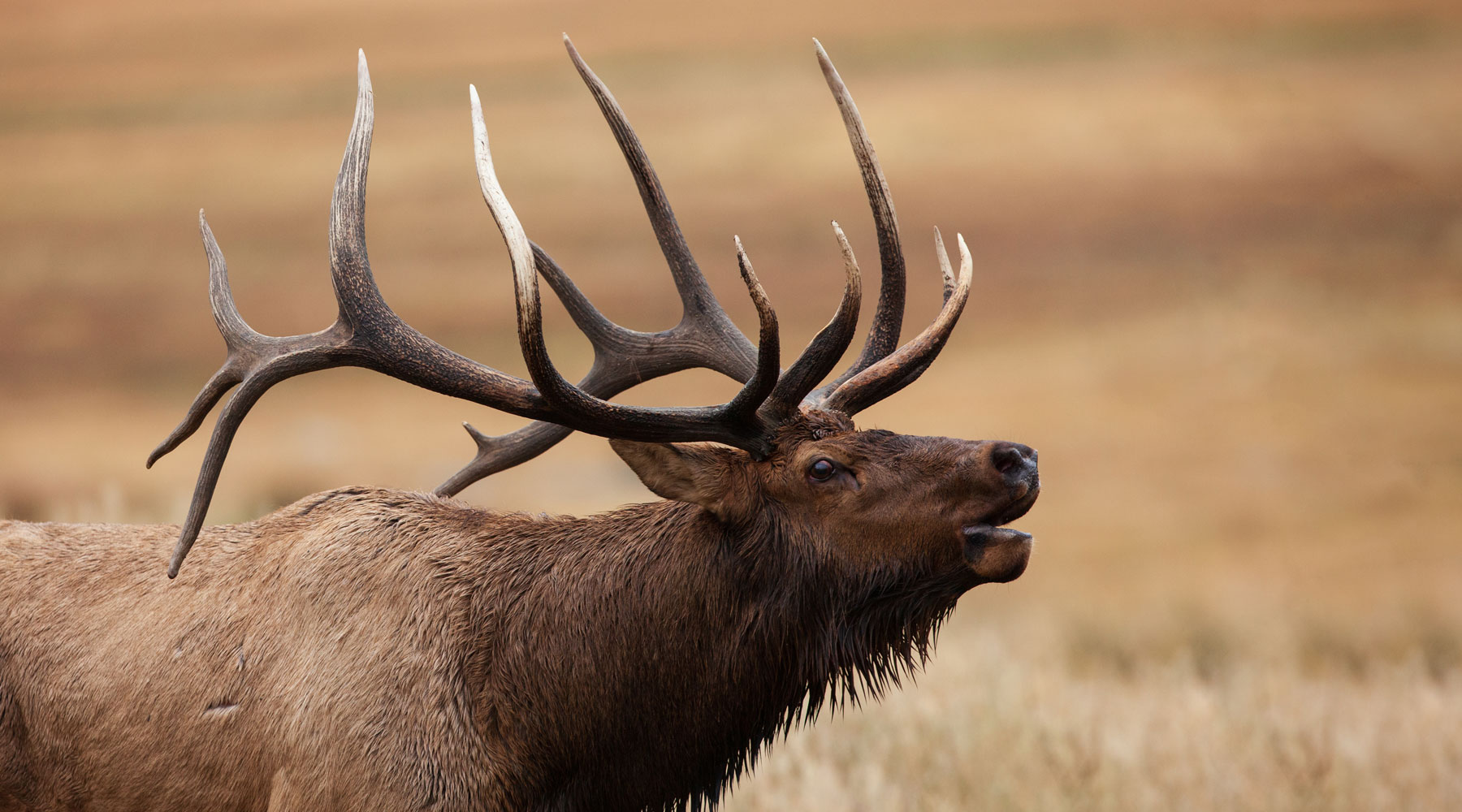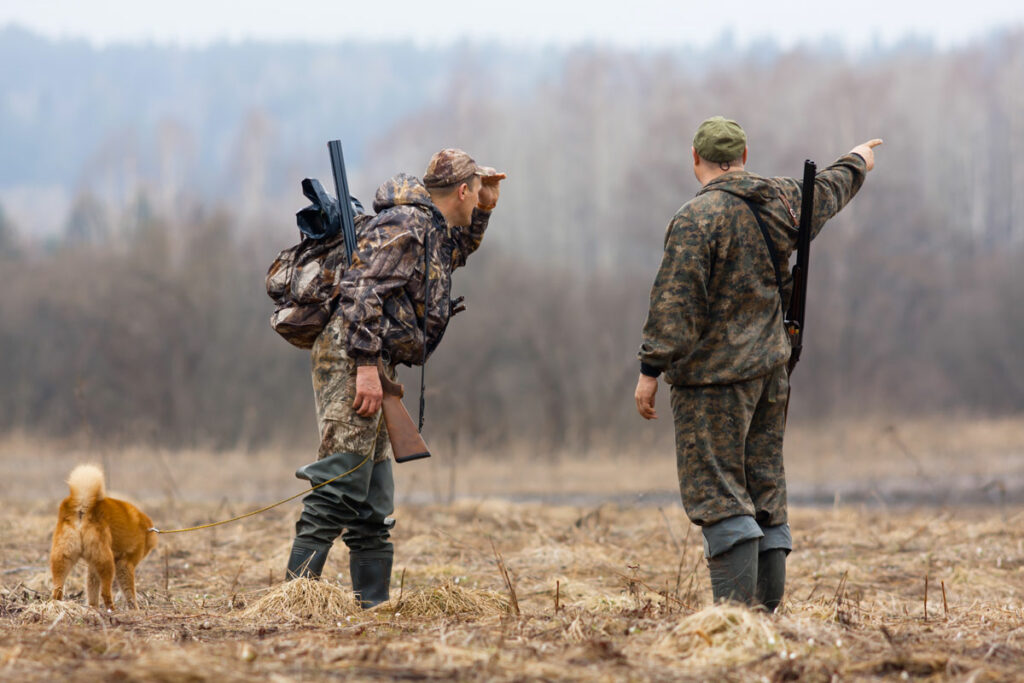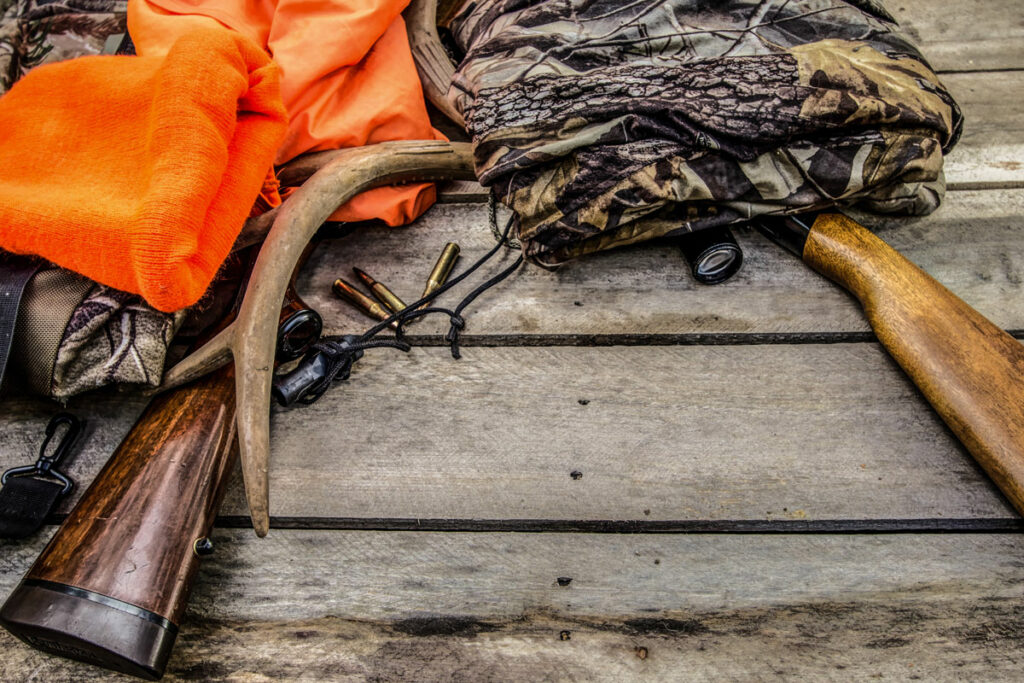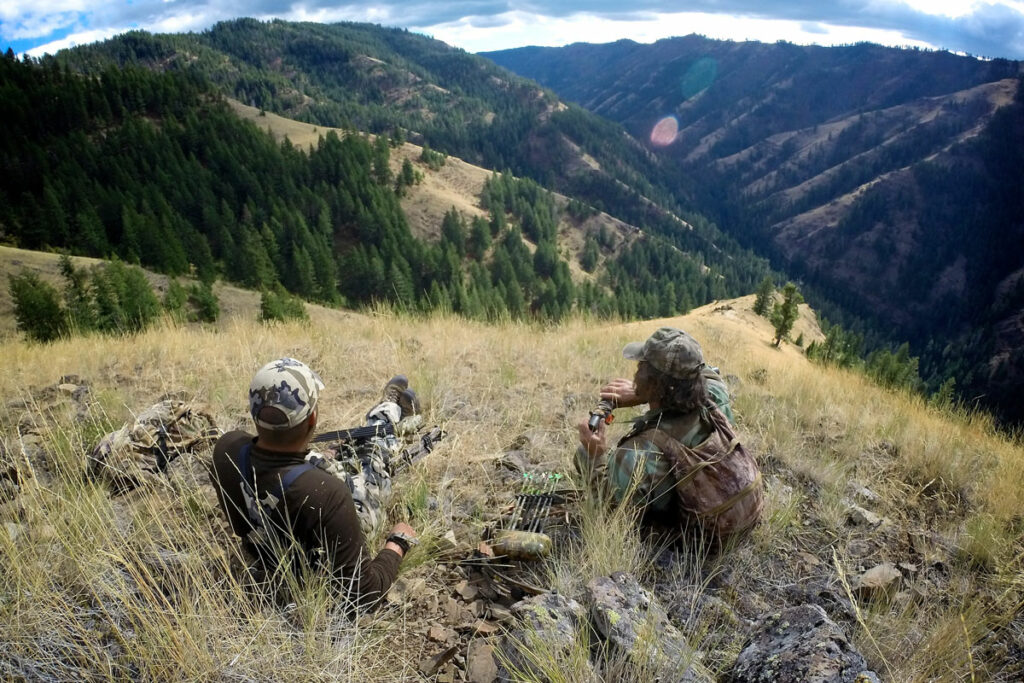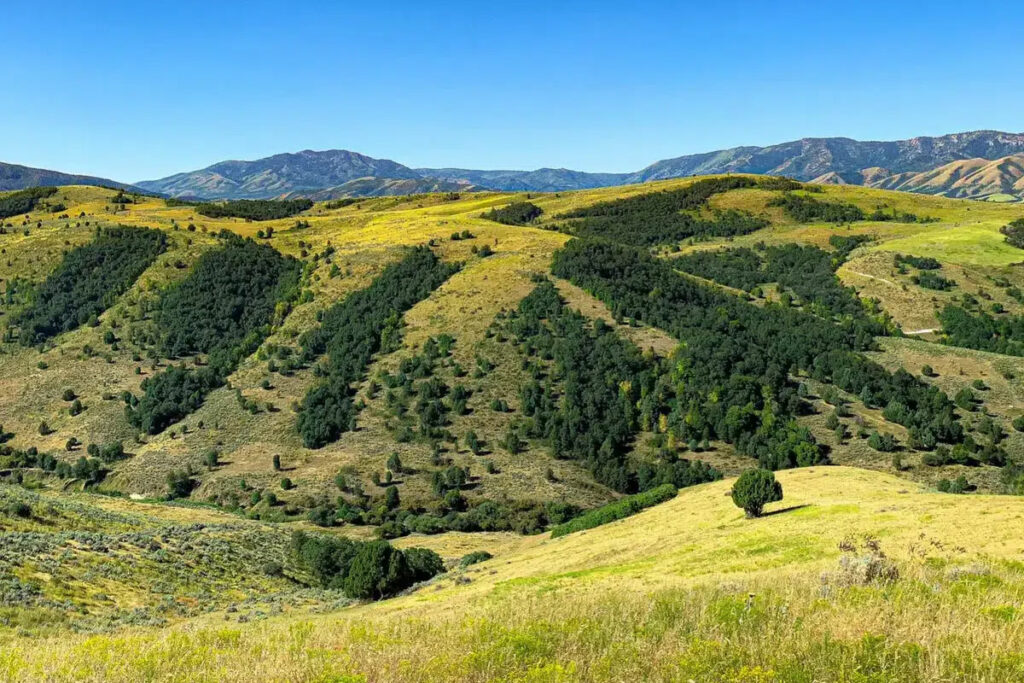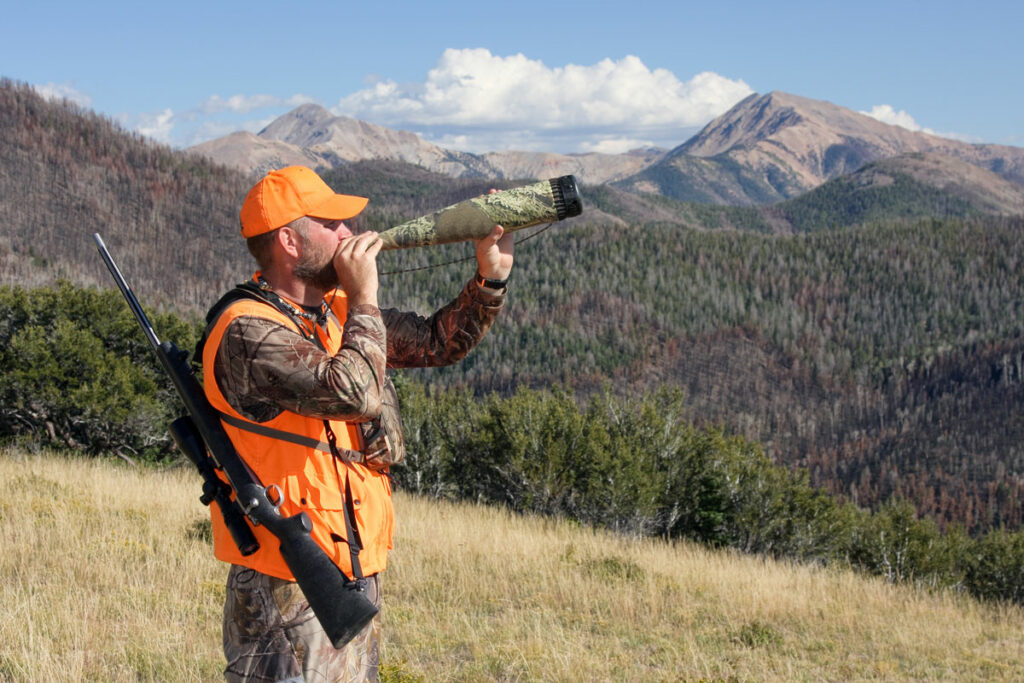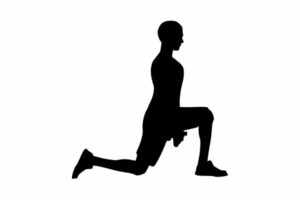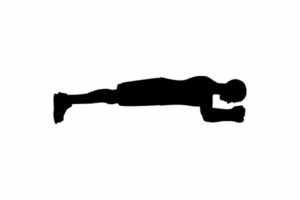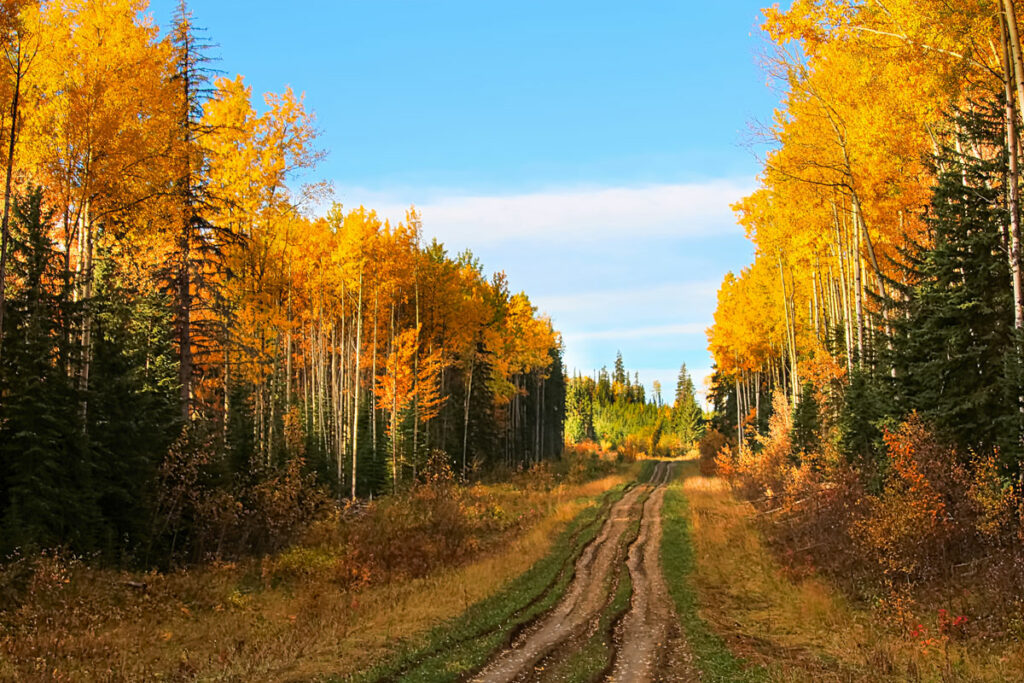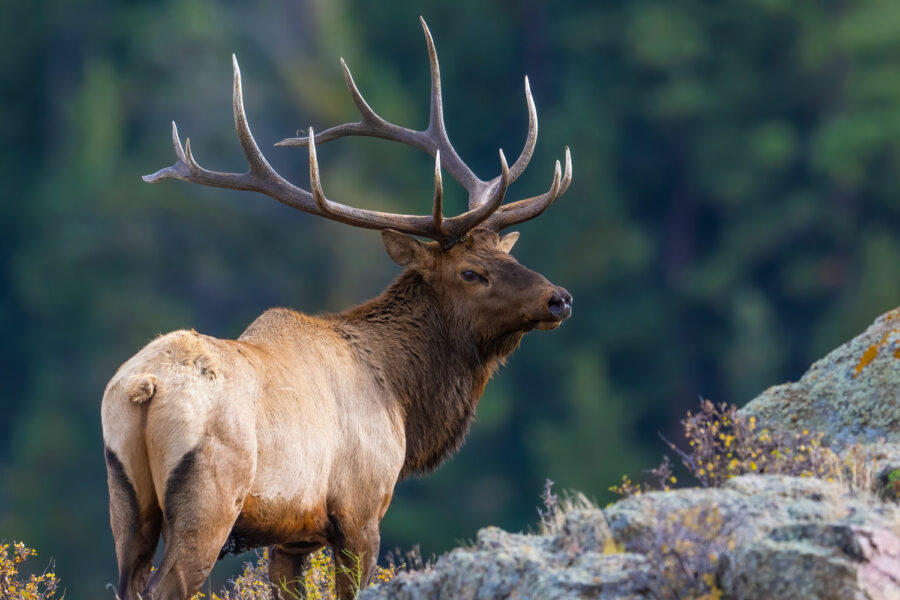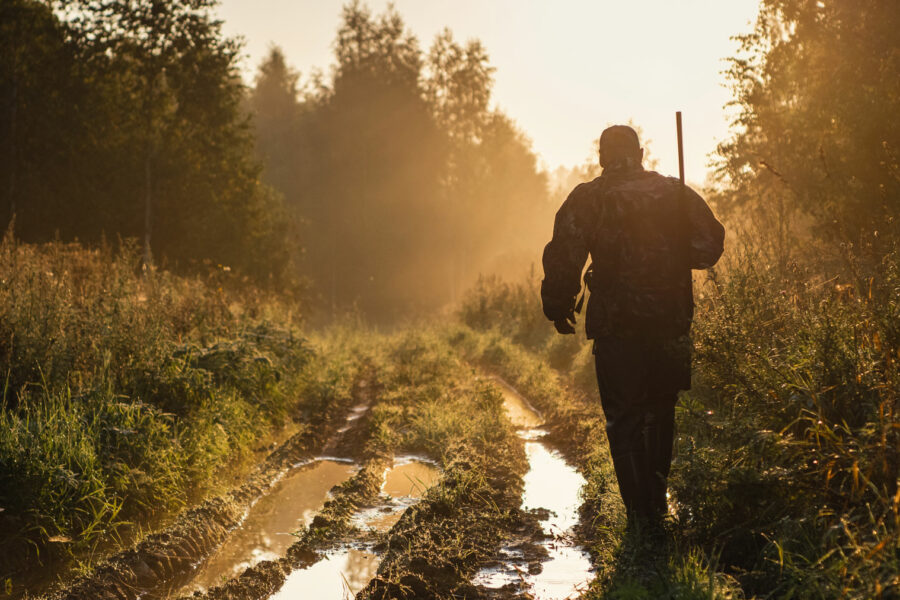Few things are more exciting than bagging a bull elk. For many, it’s a lifelong goal that isn’t achieved overnight but through years of planning and practicing. Many elements are involved in learning and organizing your first hunt, but we are here to help. We know a thing or two about elk hunting at West Canyon Ranch. Here is our complete guide with all the knowledge you’ll need to start the hunt you’ve always dreamed about.
What License and Permits Do I Need to Hunt Elk?
Before you begin the hunt of a lifetime, you’ll first need to obtain a license and a permit. Though this may vary per state, you’ll need a hunting or combination (hunting and fishing) license in Utah. There are three main options for getting an elk permit: purchasing an over-the-counter tag, applying for limited draw hunts, or hiring a hunting outfitter.]
Over-the-Counter Tags
You’ll either visit your state’s wildlife department site or a sporting goods store to purchase a tag. We’ve included links to places to buy a Utah tag, but your state may have different purchase methods. Each permit is available on a first-come, first-save basis. Note that the weapon you use for the hunt will affect the tag you must purchase, so please plan accordingly. These types of tags can be used on public hunting land. For other rules and regulations in Utah, check out the big game application guidebook.
Limited Entry Tags
Do you want to hunt with less pressure, have better animal quality, and experience a better bull-to-cow ratio for your permit? A limited entry tag permit might be for you. In this process, you’ll enter a lottery-based system and hope your name gets picked to draw a tag. Each year you don’t get picked, your chances of earning a tag are higher. However, this process can take several years to draw a tag. A little research goes a long way if you plan to go this route, so check out Rolling Bones and Go Hunt for more information regarding the states and seasons you’ll want to apply for. Remember that the more accessible the tag is to draw, the more difficult the hunt will be.
Choosing an Outfitter
The last option for obtaining a tag is to choose an outfitter like West Canyon Ranch. It’s essential to remember that each outfitter is unique; some offer a whole hunting experience, including the tag, while others will have you draw a limited tag entry. Other outfitters offer their private ranches for hunting. Either way, you’ll have access to the tag, expertise, and help of a hunting guide.
What You Need to Know About Hunting with an Outfitter
Going on a guided hunt with a top-rated outfitter is an experience every hunter should have at least once in their lifetime. Of course, if you have been in the hunting game long enough, you know that an elk hunting outfitter comes with a hefty price tag. However, ask any seasoned hunter who has worked with an elk hunting outfitter, and you’ll understand the hype.
Not only do elk hunting outfitters provide all the necessities for a successful hunt, but they even guarantee a shot at bagging one of these magnificent beasts. Working with an experienced outfitter will give you the best bang for your buck, but not every hunting outfitter is the same.
As you look for your guided elk hunt, you must understand what distinguishes one elk hunting outfitter from the next.
There are a variety of factors that play a role in the elk-hunting outfitter business. For example, a guided elk hunt is only worthwhile if the outfitter knows what they are doing. While there is always potential for failure when elk hunting, an outfitter should do all they can to give you a top-of-the-line experience.
Here is a list of everything you should look for in your Utah elk hunting outfitter to ensure your guided hunt is worth the time, money, and hard work you put into it.
4 Things to Consider When Looking for an Elk Hunting Outfitter
1. Look for Value
One of the biggest reasons elk hunters don’t go on guided trips more often is the cost. If you are fortunate enough to experience a guided elk hunt, then you should look for the outfitter that offers the best value. Consider your budget, but don’t decide which elk hunting outfitter to work with based solely on their price.
Look at how much each outfitter costs and everything included in the price. Here are a few things your guided elk hunting trip outfitter could include in their price:
- All necessary tags
- Group transportation
- Food and beverages
- Field Dress
- Lodging
- Guaranteed shot opportunity
- Access to a range of trophy bulls
- A variety of weapons, including archery, crossbows, pistols, and muzzleloaders
- Different types of hunting, including spot-and-stalk, hunting from a jeep, calling, or using provided ground blinds
2. Check Their Guided Elk Hunting Experience
What sets a guided elk hunting trip outfitter apart is their ability to provide hunters with once-in-a-lifetime hunts. Experience in the industry is the first way you can know that an outfitter is worth their price.
If an outfitter is more expensive than others in the area, ask them what makes them better than their competition. Request information based on the quality and experience of their guides. How long have they been in business? How well do they know their land? How successful is their guided elk hunting company in getting customers a shot opportunity?
You should also ask questions that help you better understand how the outfitter will handle your trip. What are the lodging conditions? What kind of meals do they provide? Only asking about the number of trophy bulls managed by the outfitter and success percentages will only give you half of the view. Ensure you know the entire experience of working with every elk hunting outfitter before booking.
3. Consider the Outfitter Location
Like in real estate, the most crucial part of any hunt depends on one thing—location, location, location. While you might have narrowed your search to Utah, a range of areas in the state offer guided elk hunts. Research and decide which location matches your expectations in a Utah elk hunt.
Utah offers a range of promising elk hunting locations. Many hunters even say that Utah has the best elk hunting in the country. However, narrowing down which specific area you’ll hunt in is an essential piece of the puzzle. If you’re looking for a real Wasatch Mountain elk hunt, only a select number of areas with guided elk hunts are available. Decide where the best location is for the type of hunt you want. Then, you can work from there.
4. Read Online Reviews
There are plenty of Utah elk hunting outfitters to choose from, making it hard for any hunter to decide. No matter what an elk hunting outfitter boasts online or over the phone, you can’t take their word for it. Take time to read their online reviews and check references. However, do so with a grain of salt.
As you research, remember that only some clients who had a successful experience will take the time to write an online review, but almost every negative reviewer will. Look for repeated phrases and customers with similar experiences. If you can reveal a pattern of good experiences and customers who highly praise certain outfitters, chances are those guides are your best bet.
Luckily, most elk hunters are honest and reasonable folk. If you speak with a reference over the phone, ask them to be open and honest. Finally, trust your gut and believe them if you think they are telling the truth.
West Canyon Ranch Is a 5-star rated private hunting ranch in Utah
Elk Hunting Gear Essentials
What Gear Do You Need for an Elk Hunt?
Preparing for an elk hunt may seem intimidating, but it’s completely doable with the right gear. To prepare for your hunt, we’ve included this list of elk hunting gear to include for success.
Elk Hunting Gear that Every Hunter Needs
Rifle and Case
Simply put, killing a bull cleanly requires a good cartridge. The 7mm Remington Magnum and the .300 Winchester Magnum are two of the most popular choices among elk hunters. Given the size and the fact that shots on elk may often be taken from a distance, it’s essential to be sure your caliber has both authority and distance capability. Bring a case to protect your rifle when not in use.
Scope
If you’ve hunted before, you know the importance of your scope. Your rifle should have a scope attached to help spot the elk when hunting. The scope also serves as an aiming instrument to help you get an accurate shot.
Binoculars
As one of the most essential elements in your elk hunting gear pack, binoculars will help you scout for elk. These lightweight, handheld instruments substantially increase vision while adding little weight to your bag.
Pair of Comfortable Boots
Seasoned hunters know the importance of wearing proper boots during a hunt. Good hunting boots should be comfortable and keep your feet warm and dry. Choose well-insulated boots that can keep your feet warm in any weather. Imagine it’s rainy, cold, and even a little snowy on the day of your hunt. You’ll be thankful that you packed waterproof boots that wick moisture out.
Hunting Backpack
Whether going out for a quick hunt or a several-day trip, a hunting backpack is an absolute must. It carries all your essential items, such as a safety kit, binoculars, water, food, ammo, and any extra layers you may need. A hunting backpack should also be lightweight, water-resistant, and durable enough to withstand the wear and tear of hunting. Choosing a bag with multiple compartments helps you to keep things organized.
Weather-Appropriate Clothing
When you’re planning a hunt, plan for unpredictable weather. One minute the weather can be warm and sunny, and another minute, it’s cold and windy. Investing in layers is the smartest move because it allows you to add or remove layers accordingly. Choose a moisture-wicking base layer to keep in heat while wicking sweat away from the skin. Durable and waterproof pants are helpful, and a long-sleeve shirt helps to protect your arms. Merino wool socks are a great choice to protect your feet inside boots. Depending on the seasons and conditions, other weather-appropriate clothing includes an insulated hunting vest, outer jacket, hat, and gloves. When planning what to wear, check local regulations to see if you are required to wear any hunter-orange material, and consider wearing camouflage material.
Sun Protection
While sunscreen is a good option for sun protection, sun-protective clothing is a wise investment for long-term use. There’s also no need to reapply sunscreen during the hunt if you wear sunproof materials. You can purchase many wearable gear pieces with SPF 50 or more. Look for long-sleeve shirts, hats, and gators to help protect your face from the sun.
Water
Anyone venturing into the outdoors for big game hunting knows that water is one of the most essential things to pack. When hunting, pack about three to five liters of water daily. If you know you’ll have access to water during the hunt, you can pack a water bottle with a personal water filter for unlimited water while hunting.
First Aid Kit
Another essential in your backpack should be a first aid kit. While there are plenty of preassembled first aid kits you can buy, you can also assemble one yourself. To build your first aid kit, include these items: tourniquet, hemostatic dressing, gauze pads, tape, four-inch ace wrap, trekking poles, band-aids, tweezers, moleskin, baby aspirin, ibuprofen, Benadryl, sam splint, syringe, and satellite communicator.
A Map, Compass, and GPS
When it comes to hunting navigational tools, you can’t be too prepared, especially if you’re unfamiliar with the area. Carrying a map, compass, and handheld hunting GPS tool will keep you from getting lost and help you track elk herds.
Hunting License, Unless You are Hunting with West Canyon Ranch
If you are planning on hunting elk on public land, you’ll need both a hunting license and an elk tag. A hunting license is a basic requirement that all hunters must have before they hunt any wild animals. To hunt an elk, every hunter must draw an elk tag. Elk tags are often challenging to obtain as they are limited. Only a few states allow free-range elk hunting, and the demand for these tags is high.
Another alternative to free-range elk hunting is private ranch hunting. At West Canyon Ranch, we eliminate the confusion and legwork of licenses, tags, rules, and regulations. Our guides will assist you with obtaining any necessary permits, and they’re also familiar with local laws, allowing you to spend more time doing what you want to do—hunting.
Other Gear to Consider Packing:
- Calls
- Scent blockers
- Field knife
- Rangefinder/case
- Water bladder/filter
- Buff
- Phone
- Headlamp
- Multi-tool
- Batteries
- Insect Repellant
- Toothbrush/paste
- Pack cover
- Chapstick
- Bow/quiver/arrows/release
- Spotter
- Game bags
- Hand warmers
- Flashlights
- Underwear
- Insulated pants, shirts, pants, and additional socks
General Elk Hunting Tips
Know Where to Look for Elk
Backcountry hunting can be both physically and mentally exhausting. Whether you’re hunting solo or with a guide, you should do your best to understand the terrain and location before you begin.
Know When to Go Elk Hunting
Plan for an early start to your hunt, as elk are most active during the early morning and early evening. Much of their activity surrounds their feeding habits. Elk can often be found grazing in open meadows but are also closely tied to aspen and cottonwood as a source for both forage and cover. It’s important to note that elk can sometimes be nocturnal. If disturbed, elk will often leave the cover of the dark timbers to feed at night before returning early in the morning.
Elk hunting season in Utah also falls during the rut, which means elk are highly vocal. During the breeding season in early September, bulls will bugle to gather cows into harems. This is an exciting time to hunt, giving hunters time to call in an elk. Consider your positioning when preparing for a call, especially in a heavily wooded area, as any slight movement could easily spook an elk.
Know the Land Where You Go Elk Hunting
If you’re planning on venturing out to the backcountry or even an unfamiliar location, it’s always important to have a reliable method for orientation and communication. While a cell phone may seem easy, it’s hardly the best device to keep on hand in remote, mountainous locations.
Know How the Wind Affects Your Scent When Elk Hunting
Appropriate clothing and footwear are essential to any hunt. But beyond your comfort, it’s important to consider your scent. You’re bound to sweat as you move, and your perspiration-soaked clothes can be a major deterrent to elk. Consider packing a few extra lightweight layers to swap out or simply air out your clothing as you pause for breaks.
Hunting Public and Private Land
Hunting on public land is fantastic, but every hunter should also experience the unique joy of hunting on private land. Hunters who try both know they provide distinctly different experiences.
Let’s discuss how private land hunting differs from public land hunting and offers several ways to access private hunting lands.
More Information About Hunting on Private Land
Public Land Hunting
Most people hunt on public land because they can easily access it. Unfortunately, that means public lands often get overhunted. While that can make for a challenge, it can leave you many empty hunting trips. To be successful on public land, don’t be afraid to go off-grid. Avoid popular areas, and don’t be married to an area just because it may have been successful in the past.
Private Land Hunting
Private land hunting provides a different hunt through exclusivity. By limiting the hunting done on their property, private landowners can craft the perfect habitat for the game and environment for the hunters.
Utah allows hunting on private land unless the landowner posts that they want no trespassing or hunting.
Book a Semi-Guided Hunt
A semi-guided hunt can be more affordable than a full-on outfitted excursion. Let your guide show you the lay of the land and the traditional hotspot. Then, after a day or two, they can leave you on your own to hunt.
Lease a Private Ranch
Pay trespass fees or a lease agreement to a ranch or private landowner to get permission to hunt their land.
You may need help finding available properties because everybody wants a good hunting ground. Wildlife or fish and game agencies often partner with ranch owners to encourage the development of more good hunting land. They can help you find ranches open to hunting.
Get a Walk-In Access Property Authorization Number
Speaking of local wildlife agencies partnering with private landowners—the Utah Division of Wildlife Resources leases private land for public hunting. The agency and the hunter must abide by the rules agreed to by the landowner in the lease.
You need an authorization number to hunt on Walk-in Access (WIA) properties. You can register for a free authorization number online. You must have your authorization number on you during the hunt.
Knock on the Door and Ask
If all else fails, simply walk up to the door and ask the owner when you find a private property you would like to hunt. They may say no, but they may begin negotiations. It will help if you establish a relationship with the landowner.
If you take this approach, look for a suitable parcel of hunting land. The ideal land will have most of the following features:
- Signs of the wildlife you plan to hunt
- Sufficient acreage to support a healthy wildlife population
- Woodlands and/or wetlands
- Adjacent to other hunting lands
- Places you can hide and wait easily
- Multiple entrances and exits
With so many ways to access private hunting land, you could soon find yourself on the hunt of a lifetime.
Is it Legal to Hunt on Your Own Property?
It may be legal for you to hunt on your property, but it depends on many factors, including the location of your property, the size of your property, what species you intend to hunt, the season, and whether you have a permit.
If you own a large piece of land in a rural area, you can likely hunt on your property, but you must still obtain a tag for the game you intend to hunt. You may own the land, but the state owns the wildlife.
If you intend to allow other hunters to hunt on your land, you may qualify for programs offered by the Utah Division of Wildlife Resources that help you get a tag or reimburse you for using the land during hunting season.
Do You Need a License to Hunt on Private Land?
Yes. You need a license to hunt on private land, even if you own the land. That’s one of the reasons to book your hunting excursion at an all-inclusive, private hunting ranch like West Canyon Ranch. “All-inclusive” means the facility handles everything, including the licensure.
How to Call Elk
Learning how to call in an elk is a skill that must be practiced, but when you take the time to get it down, you’ll be much more believable than the masses of other hunters. First, you’ll need to purchase an elk call. But with so many choices on the market, how do you know which one to choose? Here are two of the most popular elk calls and how you use them.
The Diaphragm Call
A diaphragm call is one of the most efficient and effective calls to purchase. Diaphragm calls are thin pieces of latex placed in your mouth, vibrating as air passes underneath it. It gives you the ability to make a multitude of sounds. Because there are many different latex configurations and designs, it’s important to find the perfect one for your mouth.
Once you have found a call that suits your mouth, get to work practicing the perfect call. YouTube is an excellent resource for helpful call hints and videos of elk that you can use to perfect your sound. Instead of copying another person’s sound, try to emulate the sound of the elk.
Open Reed Calls
Unlike a diaphragm elk call, an open reed call is a small instrument with an external reed that you blow into to mimic the sound of an elk. The design and style vary based on the brand, but they all accomplish sounds similar to an elk call. Like using a diaphragm call, you’ll want to practice to achieve an optimal sound.
How to Get into Shape for Your Next Hunt
Many new hunters ask us, “Is hunting physically demanding?” The simple answer is yes, especially high-altitude hunting.
Hunting is supposed to be challenging. That’s part of the fun. But it doesn’t need to be so draining that you’re beaten before the end of the first day. You can reduce the toll the hunt takes by getting in shape ahead of time.
Not only will getting in shape make hunting easier for your body, but it also gives you an advantage. Fit hunters can hunt faster, longer, and further than the competition. Stay on the hunt by stepping up your stamina. Get fit for hunting season with these helpful hunting workouts.
Endurance and Stamina for Hunting
Walk
Wear a pack weighing five pounds.
For the first month, walk for about one hour for three days a week.
Jog
Turn your walk into a jog for month two.
Add five pounds to your pack starting week two of month two.
Run
Start running in month three.
Add five pounds to your pack each week.
Strength and Balance
We broke these down into categories to keep it simple. Most of these exercises work out multiple body parts of the body.
Legs
Work out your legs three times a week. Rotate through each of these exercises.
Calf raises
Start with 25 reps on the calf raises.
Add five every other week.
Hiking
Hike off-road, preferably in areas with inclines and declines.
Start by hiking for 30 minutes.
Add five minutes each week.
Leg press
Use lower weight and higher reps on the leg press.
Start at a weight where you can complete three sets of 10 while getting a moderate workout.
Add 10 pounds each month.
Core
Work out your core three times a week. Rotate through each of these exercises.
Lunges
Start with ten reps on the lunges.
Add five every three weeks.
Box Step-ups, step-downs
Start with ten reps.
Add five every three weeks.
Stairs
Walk up and back down a set of stadium stairs (a regular staircase will do in a pinch).
Do three reps within 30 minutes with rest in between.
Add three reps each month without increasing the time limit.
Jog the stairs in month two.
Run the stairs in month three.
Arms
Work out your arms three times a week. Rotate through each of these exercises.
Pull-ups
Start with two.
Add two each week.
Shoulder press
Start at a weight where you can complete three sets of 10 while getting a moderate workout.
Add 5 pounds each month.
Bench press
Start at a weight where you can complete three sets of 10 while getting a moderate workout.
Add 10 pounds each month.
Following this guide will help you get in shape for hunting season. Be sure to alternate your endurance workouts and your strength workouts. Just do one or the other each day. However, on strength day, you should do one exercise from each category, legs, core, and arms.
For a more detailed regimen, check out this other 12-week training plan for hunters.
And remember, it’s always easier to stay in shape than to get in shape. Once you build up your stamina, adopt a healthy lifestyle with a good diet and a regular workout routine.
FAQs at West Canyon Ranch
What are the best times of year to hunt elk?
The fall offers the best time of year to hunt at West Canyon Ranch. Specifically, September, October, and November offer optimal hunting conditions. The migration patterns of game animals, mating season, and the availability of permits all contribute to making fall a great time to hunt. During these months, hunters can expect various big game species roaming the Rockies, including elk.
What Hunting Techniques Do You Use at West Canyon Ranch?
West Canyon Ranch offers a wide array of hunting techniques to cater to hunters’ diverse preferences and skill levels. West Canyon Ranch has fans of both traditional and modern hunting methods covered. People who enjoy an exciting challenge will love the popular spot-and-stalk hunting technique employed at the ranch. This technique involves patiently scouting the target game and tracking it down on foot, allowing for an immersive and thrilling hunting experience.
Alternatively, if you prefer a more stationary approach, West Canyon Ranch also offers tree stand hunting. This method involves strategically placing hunters in tree stands, allowing them to wait patiently for their target to come within range. This technique works well in areas with dense vegetation or when hunting certain game species, including some big game. No matter your preferred hunting technique, West Canyon Ranch provides ample opportunities to indulge in your passion and test your hunting skills.
Guided hunting trips also allow you to learn and improve your hunting skills. The expert outfitters and guides at West Canyon Ranch share their years of experience and offer valuable tips and techniques to enhance your hunting prowess. Whether you master the art of tracking, hone your marksmanship, or learn more about animal behavior, you’ll walk away from your guided hunting experience with a wealth of knowledge.
What Kind of Safety Measures Do You Have in Place?
To ensure the safety of our guests, we have implemented a comprehensive set of safety measures to provide you with a secure hunting environment. Our highly trained and experienced guides prioritize the safety of our guests above all else.
Before each hunt, our guides conduct thorough safety briefings and provide detailed instructions on firearm handling, shooting range safety, and emergency protocols. Our staff regularly inspects and maintains all hunting equipment for optimal performance and safety.
Additionally, we have qualified medical personnel available on-site for any medical emergencies.


